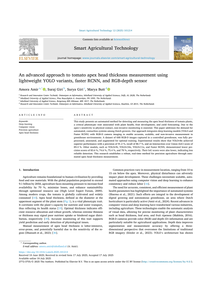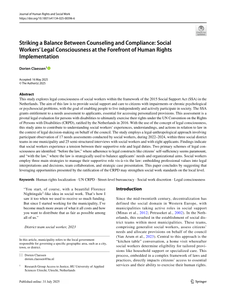In mobile robotics, LASER scanners have a wide spectrum of indoor and outdoor applications, both in structured and unstructured environments, due to their accuracy and precision. Most works that use this sensor have their own data representation and their own case-specific modeling strategies, and no common formalism is adopted. To address this issue, this manuscript presents an analytical approach for the identification and localization of objects using 2D LiDARs. Our main contribution lies in formally defining LASER sensor measurements and their representation, the identification of objects, their main properties, and their location in a scene. We validate our proposal with experiments in generic semi-structured environments common in autonomous navigation, and we demonstrate its feasibility in multiple object detection and identification, strictly following its analytical representation. Finally, our proposal further encourages and facilitates the design, modeling, and implementation of other applications that use LASER scanners as a distance sensor.
DOCUMENT
This article deals with automatic object recognition. The goal is that in a certain grey-level image, possibly containing many objects, a certain object can be recognized and localized, based upon its shape. The assumption is that this shape has no special characteristics on which a dedicated recognition algorithm can be based (e.g. if we know that the object is circular, we could use a Hough transform or if we know that it is the only object with grey level 90, we can simply use thresholding). Our starting point is an object with a random shape. The image in which the object is searched is called the Search Image. A well known technique for this is Template Matching, which is described first.
DOCUMENT
The objective of this report is to share the results of the test that we have made to evaluate the localization performance of the Spot robot across three scenarios, each featuring different velocities in both translation and rotation.
MULTIFILE

This paper describes the concept of a new algorithm to control an Unmanned Aerial System (UAS) for accurate autonomous indoor flight. Inside a greenhouse, Global Positioning System (GPS) signals are not reliable and not accurate enough. As an alternative, Ultra Wide Band (UWB) is used for localization. The noise is compensated by combining the UWB with the delta position signal from a novel optical flow algorithm through a Kalman Filter (KF). The end result is an accurate and stable position signal with low noise and low drift.
DOCUMENT

The paper introduced an automatic score detection model using object detection techniques. The performance of sevenmodels belonging to two different architectural setups was compared. Models like YOLOv8n, YOLOv8s, YOLOv8m, RetinaNet-50, and RetinaNet-101 are single-shot detectors, while Faster RCNN-50 and Faster RCNN-101 belong to the two-shot detectors category. The dataset was manually captured from the shooting range and expanded by generating more versatile data using Python code. Before the dataset was trained to develop models, it was resized (640x640) and augmented using Roboflow API. The trained models were then assessed on the test dataset, and their performance was compared using matrices like mAP50, mAP50-90, precision, and recall. The results showed that YOLOv8 models can detect multiple objects with good confidence scores.
DOCUMENT

Through a correspondence between two scholars, this paper explores and critiques various ways in which scholars working in ethnography and cultural analysis frame and construct their methodology and object of study. Through the close reading of theoretical accounts of methodology in ethnography and cultural analysis, we examine how these accounts construct the relationship between the scholar and her object of study.We read these scholarly practices as protocols, referring to the ways in which accounts of methodology may be understood as rules/guidelines by which scholars in these fields conduct research. Protocol etymologically refers to protos (first) and kolla (glue). Through the figure of the protocol, we delineate how scholars in ethnography and cultural analysis themselves become implicated in giving accounts of their research methodologies. Somatechnics presents a thoroughly multi-disciplinary scholarship on the body, providing a space for research that critically engages with the ethico-political implications of a wide range of practices and techniques. The term ‘somatechnics’ indicates an approach to corporeality which considers it as always already bound up with a variety of technologies, techniques and technics, thus enabling an examination of the lived experiences engendered within a given context, and the effects that technologies, technés and techniques have on embodiment, subjectivity and sociality.
MULTIFILE

This article discusses the viability of a feminist constructivist approach of knowledge through the careful reading of the work of the feminist scholar and historian of science and technology, Donna Haraway. Haraway proposes an interpretation of objectivity in terms of "situated knowledges". Both the subject and the object of knowledge are endowed with the status of material-semiotic actors. By blurring the epistemological boundary between subject and object, Haraway's narratives about scientific discourse become populated with hybrid subjects/objects. The author argues that the ethics of these hybrid subjects consists of an uneasy mixture of a Nietzschean and a socialist-Christian ethic. The article concludes by setting out why Haraway's project constitutes an interesting effort to fuse postmodern insights and feminist commitments.
DOCUMENT

This study presents an automated method for detecting and measuring the apex head thickness of tomato plants, a critical phenotypic trait associated with plant health, fruit development, and yield forecasting. Due to the apex's sensitivity to physical contact, non-invasive monitoring is essential. This paper addresses the demand for automated, contactless systems among Dutch growers. Our approach integrates deep learning models (YOLO and Faster RCNN) with RGB-D camera imaging to enable accurate, scalable, and non-invasive measurement in greenhouse environments. A dataset of 600 RGB-D images captured in a controlled greenhouse, was fully preprocessed, annotated, and augmented for optimal training. Experimental results show that YOLOv8n achieved superior performance with a precision of 91.2 %, recall of 86.7 %, and an Intersection over Union (IoU) score of 89.4 %. Other models, such as YOLOv9t, YOLOv10n, YOLOv11n, and Faster RCNN, demonstrated lower precision scores of 83.6 %, 74.6 %, 75.4 %, and 78 %, respectively. Their IoU scores were also lower, indicating less reliable detection. This research establishes a robust, real-time method for precision agriculture through automated apex head thickness measurement.
DOCUMENT

Deictic gestures are gestures we make during communication to point at objects or persons. Indicative acts of directing-to guide the addressee to an object, while placing-for acts place an object for the addressee’s attention. Commonly used presentation software tools, such as PowerPoint and Keynote, offer ample support for placing-for gestures, e.g. slide transitions, progressive disclosure of list items and animations. Such presentation tools, however, do not generally offer adequate support for the directing-to indicative act (i.e. pointing gestures). In this paper we argue the value of presenting deictic gestures to a remote audience. Our research approach is threefold: identify indicative acts that are naturally produced by presenters; design tangible gestures for multi-touch surfaces that replicate the intent of those indicative acts; and design a set of graphical effects for remote viewing that best represent these indicative acts for the audience. Clinton Jorge1, Jos P. van Leeuwen2, Dennis Dams3, Jan Bouwen4 1 University of Madeira, Madeira-ITI, Funchal, Portugal; 2 The Hague University of Applied Sciences, The Hague, Netherlands; 3,4 Bell Labs, Alcatel-Lucent, Antwerp, Belgium Copyright shared between: University of Madeira, Madeira-ITI, Funchal, Portugal; The Hague University of Applied Sciences, The Hague, Netherlands; Bell Labs, Alcatel-Lucent, Antwerp, Belgium
DOCUMENT

This study explores legal consciousness of social workers within the framework of the 2015 Social Support Act (SSA) in the Netherlands. The aim of this law is to provide social support and care to citizens with impairments or chronic psychological or psychosocial problems, with the goal of enabling people to live independently and actively participate in society. The SSA grants entitlement to a needs assessment to applicants, essential for accessing personalized provisions. This assessment is a pivotal legal evaluation for persons with disabilities to ultimately exercise their rights under the UN Convention on the Rights of Persons with Disabilities (CRPD), ratified by the Netherlands in 2016. With the use of the concept of legal consciousness, this study aims to contribute to understanding social workers’ experiences, understandings, and actions in relation to law in the context of legal decision-making on behalf of the council.
MULTIFILE
